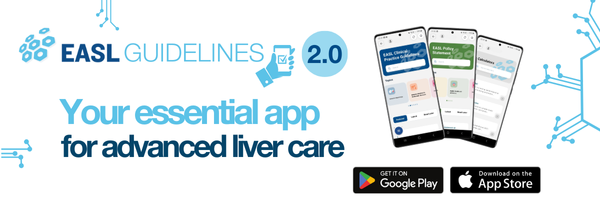New EASL Clinical Practice Guidelines on extrahepatic cholangiocarcinoma

EASL has released new Clinical Practice Guidelines (CPGs) for the management of extrahepatic cholangiocarcinoma (eCCA). These guidelines offer an updated, clinically oriented resource to support healthcare professionals in the accurate diagnosis and management of this malignancy. Developed using the PICO (Patient/Problem/Population, Intervention, Comparison, Outcome) framework, the guidelines address six core areas: Classification, Epidemiology, Surveillance/Early Diagnosis, Diagnosis/Staging, Therapy, and Follow-up. Each section focuses on the most relevant and challenging aspects of clinical practice, emphasising the importance of precise classification, the integration of emerging molecular insights, and the adoption of practical diagnostic and therapeutic strategies adapted to real-world clinical settings.
A multidisciplinary and evidence-based approach
The new guidelines aim to assist clinicians in managing the complexities of extrahepatic cholangiocarcinoma through a number of key evidence-based approaches and a multidisciplinary framework. By advocating for a tripartite anatomical classification—dividing cholangiocarcinoma into intrahepatic (iCCA), perihilar (pCCA), and distal (dCCA) forms—they support better differentiation between tumour subtypes, which demonstrate distinct biological behaviours, risk factors, and responses to treatment.
The guidelines emphasise standardised diagnostic pathways, with clear recommendations on imaging modalities and tissue acquisition techniques, to reduce diagnostic uncertainty and improve the accuracy of distinguishing eCCA from benign strictures.
Therapeutic strategies and precision oncology
Surgical resection is reaffirmed as the only curative option for localised disease. For advanced cases, the guidelines outline evidence-based systemic therapies, such as gemcitabine-cisplatin combined with immune checkpoint inhibitors, and recommend adjuvant capecitabine following resection. They further advocate for the integration of molecular profiling into routine practice, to enable personalised treatment strategies that identify targetable alterations such as FGFR2 fusions, IDH1 mutations, and HER2 amplifications.
This approach allows for the application of precision oncology alongside conventional chemotherapy and immunotherapy regimens. Specific recommendations on biliary drainage procedures are also provided, clarifying their indications, optimal timing, and preferred techniques.
Advances in molecular profiling
The guidelines incorporate recent advances in molecular profiling, recognising the increasing relevance of precision oncology in the management of eCCA. For patients with advanced or unresectable disease, molecular testing is now recommended to identify alterations that may be amenable to targeted therapy, including FGFR2 fusions, IDH1 mutations, HER2/ERBB2 amplifications, and BRAF V600E mutations. Although these alterations are more common in intrahepatic cholangiocarcinoma, they are also found in extrahepatic forms and have potential therapeutic implications.
The guidelines highlight emerging research in the genetic differentiation of CCA subtypes, and note the potential future role of liquid biopsies, such as methylation panels and extracellular vesicle-associated miRNAs from bile or plasma, for early detection and monitoring of disease, although these techniques are not yet standard practice.
Potential impact on patient outcomes
The widespread adoption of these guidelines has the potential to standardise diagnostic and therapeutic approaches across centres with varying levels of expertise in eCCA management, ultimately aiming to improve clinical outcomes. A clearer classification of biliary malignancies into iCCA, pCCA, and dCCA, along with systematic documentation of recognised risk factors and family history, will enhance the epidemiological understanding of cholangiocarcinoma.
A structured diagnostic approach, including precise recommendations on the timing and modality of imaging, endoscopic evaluation, and biliary decompression, is intended to promote alignment with evidence-based practice, even across non-referral and referral centres. Furthermore, well-defined guidance on surgical strategies and chemotherapy regimens, initiated after multidisciplinary case evaluation, offers the potential to improve outcomes even in a historically difficult-to-treat malignancy.
Enhancing accessibility through the EASL Guideline App
The guidelines are available on the EASL Guideline App, intended to further enhance their accessibility and implementation in daily clinical practice. The app allows professionals to consult the guidelines at the point of care, whether during patient consultations, multidisciplinary tumour boards, or procedures, without reliance on printed material or desktop searches.
Interactive flowcharts for diagnosis and treatment selection are designed to help streamline complex workflows. In regions with limited access to specialist expertise, the app may serve as a useful resource, offering evidence-based guidance to generalists involved in the management of eCCA. By embedding the guidelines into a digital tool compatible with clinicians’ daily routines, the app may reduce variability in care, accelerate the adoption of advances such as immunotherapy combinations, and support the delivery of precision-based, guideline-concordant care across different healthcare settings.


